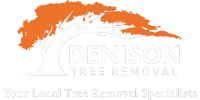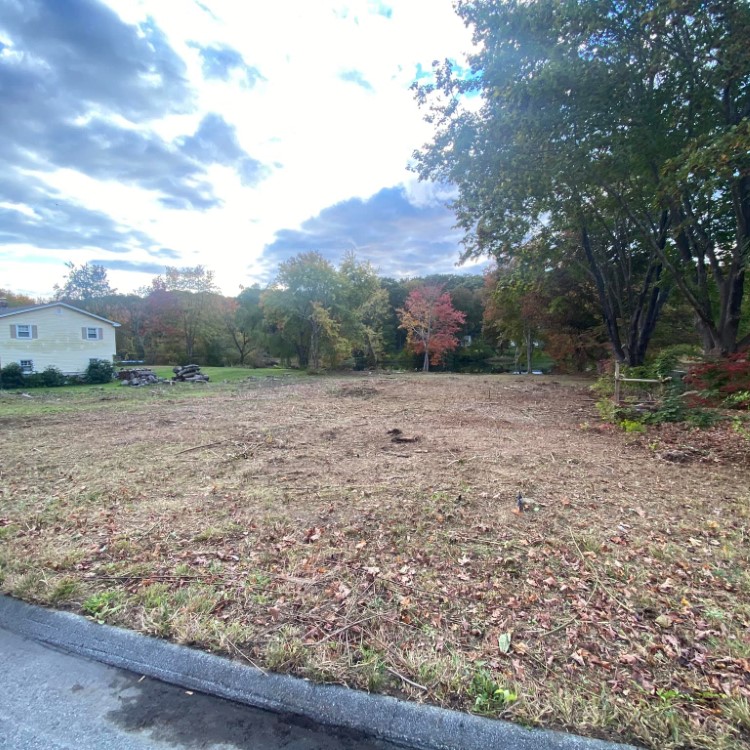Tree removal is an essential step in preparing land for construction, landscaping, or agricultural purposes. Whether you’re looking to develop a residential property in Ledyard, CT, or clear land for commercial use, proper planning and execution are crucial. Tree removal for land clearing involves more than just cutting down trees—it requires a strategic approach to ensure safety, sustainability, and compliance with local regulations.
Key Takeaway: Proper preparation before tree removal can save time, reduce costs, and ensure a smooth land clearing process. Working with professionals like Denison Tree Removal ensures a safe and efficient approach to tree clearing in Ledyard, CT, and surrounding areas.
Assessing Your Land Before Tree Removal
Conducting a Tree Inventory
Understanding the types and health of trees on your property is the first step in land clearing. A tree inventory [internal link] helps identify which trees should be removed, preserved, or relocated. Professional arborists can conduct an assessment using specialized techniques to evaluate tree health [internal link].
Checking Soil Conditions
Before clearing land, a soil test [internal link] is recommended to understand its composition and fertility. This can help determine whether soil conditioners [internal link] are needed to improve post-removal landscaping efforts.
Evaluating Local Regulations
In Ledyard, CT, and nearby areas such as Preston, Waterford, and Stonington, tree removal regulations vary. Some municipalities require permits for tree removal, particularly for large-scale land clearing projects. Hiring a professional service like Denison Tree Removal ensures compliance with local ordinances.
Planning for Efficient Tree Removal
Choosing the Right Time for Tree Removal
The best time to remove trees depends on the species, weather conditions, and project timeline. In colder months, frozen ground minimizes soil disruption, while dry seasons prevent excessive mud and erosion.
Determining Equipment Needs
Tree removal for land clearing requires specialized equipment such as chainsaws, wood chippers, and stump grinders. Working with a professional tree removal service [internal link] ensures that the right tools and techniques are used for safe and efficient clearing.
Identifying Safety Hazards
Overgrown trees, weak branches, and proximity to power lines pose significant risks during removal. Certified arborists [internal link] are trained to assess and mitigate these hazards to ensure a safe process.
The Tree Removal Process
Cutting and Removing Trees
Once planning is complete, tree felling begins. Professionals use precise cutting techniques to minimize damage to surrounding land and structures. Large trees may be sectioned and removed piece by piece.
Stump Removal and Grinding
Leaving stumps behind can create obstacles for construction and landscaping. Stump grinding [internal link] eliminates them efficiently, while stump harvesting [internal link] can be an option for repurposing tree roots.
Clearing Debris and Preparing the Land
After tree removal, debris must be cleared to ensure the land is ready for its next purpose. Wood chipping and mulching are sustainable ways to manage leftover tree material.
Environmental Considerations and Land Restoration
Preserving Beneficial Trees
Not all trees need to be removed. Some species, such as fertilizer trees [internal link], improve soil quality and provide ecological benefits. Keeping select trees can enhance land stability and aesthetics.
Enhancing Soil Health
After clearing land, reconditioning the soil is essential for future plant growth. Soil aeration [internal link] and the addition of soil conditioners [internal link] can revitalize depleted land.
Managing Pests and Invasive Species
Tree removal can expose land to pests like woodboring beetles [internal link]. Implementing pest control [internal link] measures ensures the long-term health of remaining vegetation.
Answering Common Questions
How long does land clearing take? The duration varies based on the land size, tree density, and equipment used. A small residential lot may take a few days, while large commercial projects can take weeks.
Is tree removal environmentally friendly? When done responsibly, tree removal can promote healthier ecosystems. Sustainable practices such as selective clearing, replanting, and using mulch can mitigate environmental impact.
Do I need a permit for tree removal in Ledyard, CT? Permit requirements depend on local regulations. Consulting a professional service ensures compliance with laws in Preston, Waterford, Stonington, and East Lyme [internal link].
The Role of Arborists in Land Clearing
Certified arborists play a crucial role in tree removal by assessing tree health, recommending best practices, and ensuring safe removal processes.
Sustainable Land Clearing Practices
Sustainable methods like selective logging, replanting, and wood recycling help maintain environmental balance while preparing land for new developments.
Contact Denison Tree Removal for Expert Tree Removal Services
If you’re planning a land clearing project in Ledyard, CT, or nearby towns, Denison Tree Removal provides professional and efficient services. Contact us today [internal link] for a consultation.
By following these guidelines, landowners can ensure a smooth and responsible tree removal process that supports future property development and environmental sustainability.

